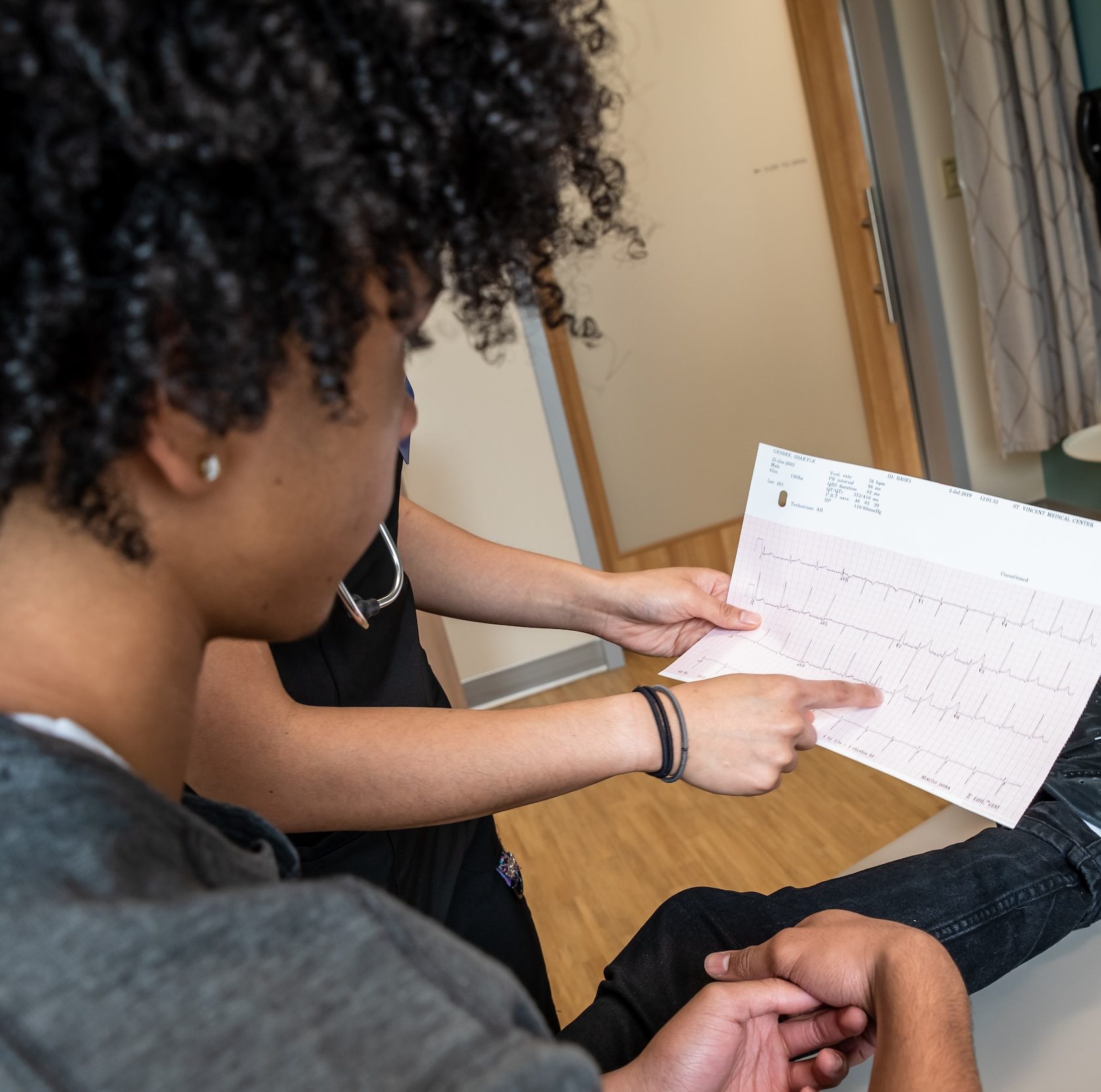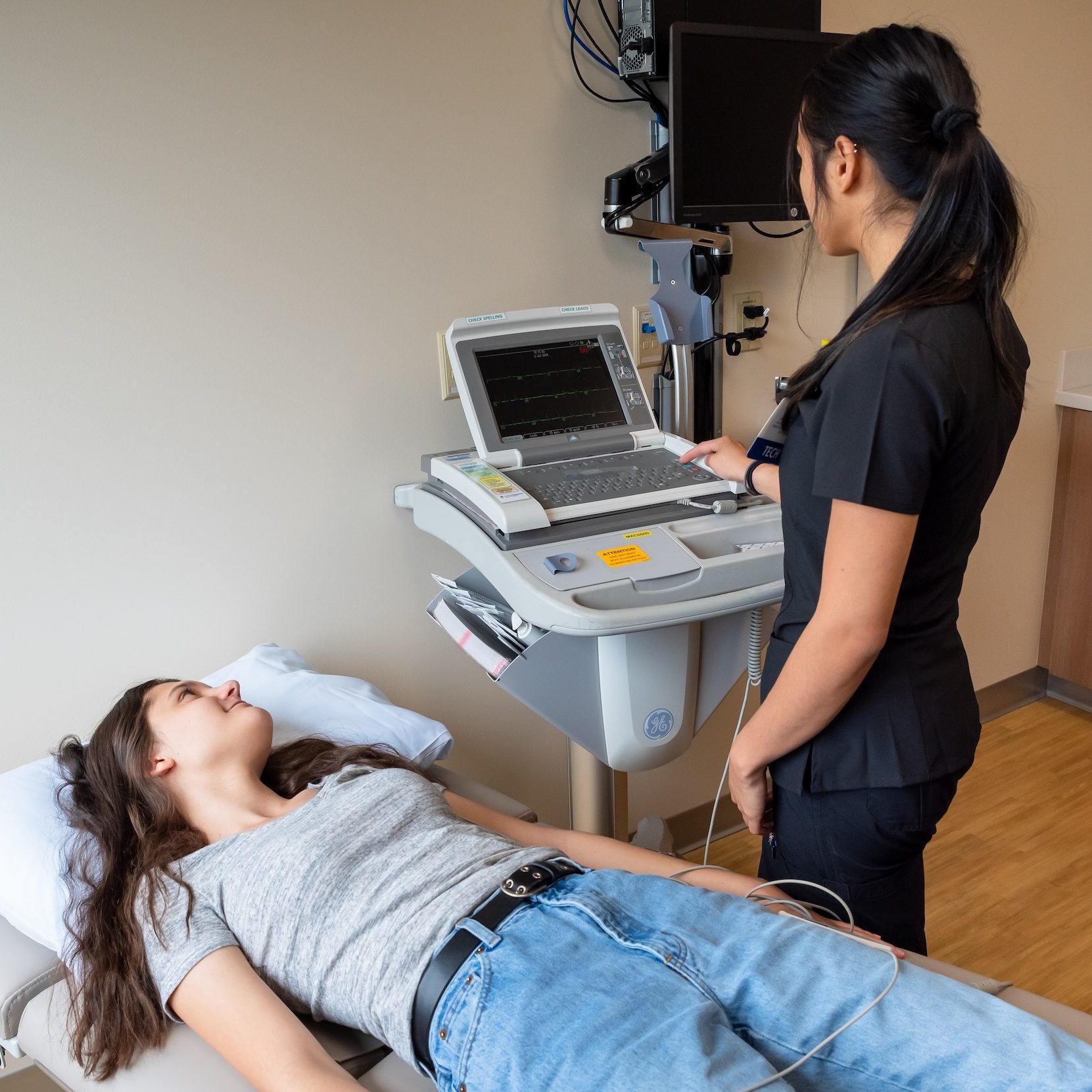Cardiac Screening
Through our partnerships with Legacy Health and Providence Heart Institute, we have sponsored teen heart screening events to alert young people and their families if abnormalities of the heart are found. With the foundation’s financial support, over 42,000 teens have been screened.
Chances are, your child’s heart is healthy. But, a small percentage of young people have hidden heart defects that put their lives at risk — especially during physical exertion. Cardiac screening can help detect Hypertrophic Cardiomyopathy (HCM) — the leading cause of death in teen athletes.



Photos courtesy of Providence Heart Clinic & Play Smart
What is Hypertrophic Cardiomyopathy?
Hypertrophic Cardiomyopathy (HCM) is a complex, predominantly genetically mediated heart disease, affecting approximately 1 in 500 individuals. The disease is characterized by excessive thickening of the heart muscle, most commonly in the septum, which is the muscular wall that separates the lower chambers of the heart. The severity of symptoms and progression of HCM vary greatly between each patient. The most common symptoms include chest pain, shortness of breath, palpitations (forceful or irregular heart beating), lightheadedness, and syncope (fainting).
Testing in HCM usually includes, but not limited to, electrocardiogram (ECG), echocardiography, stress echocardiogram, and cardiac MRI.
There are two major types of HCM:
- Obstructive HCM
- Obstructive HCM is defined as the partial obstruction (or blockage) of blood flow out of the heart. This is a result of abnormal motion of the mitral valve, causing it to come in contact with the thickened septum. This results in increased pressure within the lower chamber of the heart and a possible drop in blood pressure.
- In some patients, this obstruction of flow is present at rest, while in others it occurs only during exercise. For this reason, an exercise stress test must be performed.
- For some patients, the obstruction of flow can be treated effectively with medications. However, in some cases medications are not effective and invasive therapies, such as open heart surgery or catheter based interventions, are needed to adequately to relieve the obstruction.
- Non obstructive HCM
- Non-obstructive HCM is characterized by thickened heart muscle without obstruction to blood flow at rest or with exercise.
- Non obstructive HCM is adequately managed with medications alone and invasive therapies are not indicated.
- A small percentage of patients with HCM are at an increased risk of sudden cardiac death due to an arrhythmia. Determining a patient’s risk is done by taking very thorough personal and family history, performing a physical examination, and completing a variety of non-invasive testing. This includes cardiac imaging and heart rhythm monitoring.
Using this information, we are able to identify those patients who are at increased risk and discuss the implantation of a cardioverter-defibrillator (ICD) to both sense and terminate such arrhythmias.
Genetic testing can be used to identify genetic mutations causing HCM so that other family members can also be tested in order to determine their risk of acquiring the disease.
Vigorous exercise in some patients can increase the risk of arrhythmias and fainting episodes. Cardiologists who specialize in HCM will be able to provide individual recommendations on what activities and exercises are safe and not safe.



